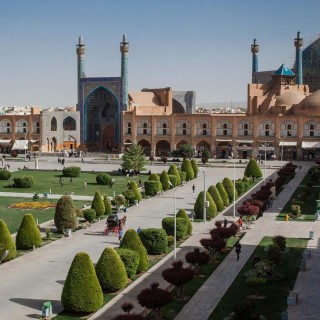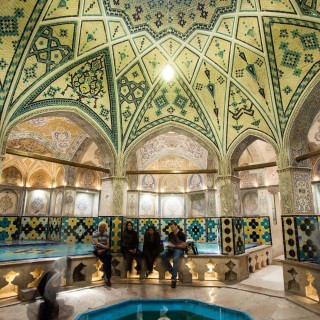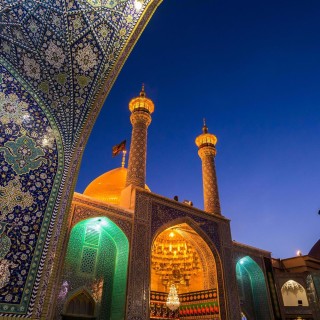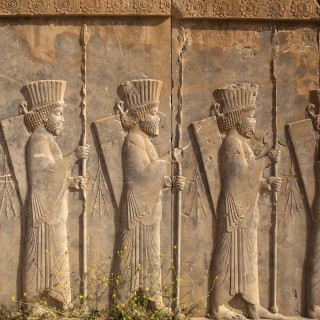Tailor-Made Tour
- Duration13 Days
- Flights IncludedNo
- Prices From £ 3845
 Places Visited :
Tehran, Shiraz, Yazd, Meybod, Naein, Isfahan, Kashan, Nushabad, Qom, Tehran
Places Visited :
Tehran, Shiraz, Yazd, Meybod, Naein, Isfahan, Kashan, Nushabad, Qom, Tehran
Please Note: We are not currently offering any departures to Iran, following a change in the FCO Travel Advice on 10th January 2020. TransIndus has happily operated tours to Iran for many years, with our clients having greatly enjoyed learning about its rich culture and fascinating history and have repeatedly commented on the warm friendliness of the Iranian locals they've met along the way. We sincerely hope to be able to resume our tours soon and look forward to the day when we can show more of our clients the wonders of Iran. In the interim, TransIndus offers tours to many other countries across the Middle East & Central Asia and we hope one of these other destinations will satisfy your traveller's curiosity. Please do get in touch with our team of travel specialists for further advice.
Experience the very best Iran has to offer on our Special Group Tour. Combining all the big-hitting sights with many less well-known destinations, from market towns to mountain villages, our signature journey will help you get under the skin of this fascinating, much-misunderstood country.
A fully escorted tour from the UK plus a local expert, English-speaking guide. We have scoured Iran over recent years in search of its most compelling monuments, crafts centres and bazaars. The result is, we think you’ll agree, an itinerary offering exceptional variety, at a highly competitive price.
-
Marvel at the splendour of ancient Persepolis
-
Shop for silk carpets in the bazaars of Shiraz under the guidance of experts
-
Discover beautiful, turquoise-domed tombs amid the mud-walled alleyways of Yazd
-
Experience the astonishing Safavid architecture of Isfahan
-
Learn about traditional Iranian crafts with local artisans
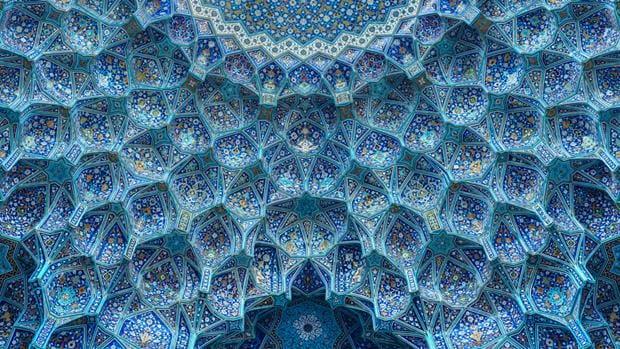
Is this the tour for you?
The trip builds on the great success of our previous Iran journeys, which proved among the highlights of our group tour programme last year. It is designed primarily with British nationals in mind. Unlike our European cousins, we Brits still have to be accompanied wherever we travel in Iran by a government-approved guide, who must also stay at the same hotel – which can prove prohibitively expensive for luxury, tailor-made journeys. Spreading the cost over a small group, however, makes exploring this wonderful country a lot more affordable. It’s also fun to swap stories, compare purchases and enjoy the company of like-minded travellers at the end of a day’s sightseeing. Many of our clients stay in touch with friends made on our group tours and choose to take TransIndus trips together in the years after.
If you’ve recently been inspired by Joanna Lumley’s ‘Silk Road’ adventures, have longed to see Persepolis or Isfahan, or are merely eager to experience an exciting, new and totally unique country, then read on . . .

WHAT OUR CLIENTS SAY:
Our Iran tours have been some of the most popular we’ve ever run, but don’t believe us; see what our past clients have to say!
“(The) trip to Iran was fantastic! All the sights we saw were beautiful, fascinating historically and/or interesting culturally. It was the last stop in Qom at the shrine of Fatima that perhaps made the most impression on me – the beauty of the place, the fact that it was full of life and the statements made by our Mullah guide. This has to be one of our best or the best holiday we have had: the beautiful architecture, the wealth of history, the culture and the friendly people. “
Sue Sullman
“We had a great holiday, saw so many sights - a fascination for the soul and mind. Everything went off seamlessly. We especially enjoyed Persepolis and the tombs of Xerxes, Darius and Cyrus, they were absolutely stunning.”
Jerry and Anne O’Hagan
“My first impression of Persepolis was of awe at the vastness and power that must have been present to be able to command the building of the sites. The legends live on in the monuments. It was quite an experience and the people were delightful.”
Richard Broomhead
“For me, the people of Iran were the standout and most enjoyable aspect, they were just extraordinary, so relatable and self-aware. Like the rest of the world, they are moving more and more into the modern age.”
Graham Dickinson
“We couldn’t have wished for a more amenable and jolly group and hope that friendships forged on our journey continue to flourish. Thank you also, Amrit for enticing us in the first place and for the work of both yourself and Transindus in organising (absolutely) everything!”
Lorna Broom-Berry
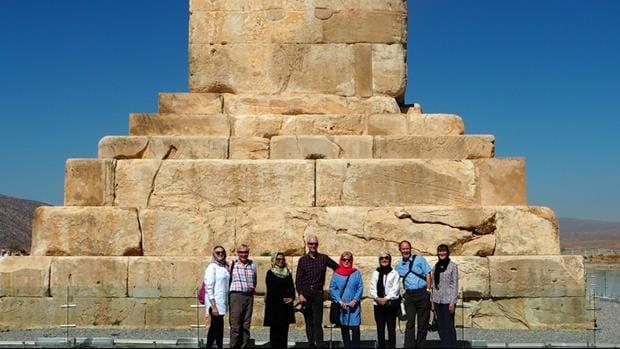
Our Route

From the capital, Tehran, our tour starts with a short flight south to the city of Shiraz, then progresses overland via Persepolis to the spectacular desert oasis of Yazd – surely one of the most exotic skylines in the Middle East. Isfahan is next and, for most, the highlight of the trip. The mosques on Imam Square are worth the fare alone!
As well as the famous sights, our itinerary will also take in some lesser known gems, where we’ll be able to experience local life in small towns and rural villages. None of the stages are excessively long, and the scenery slipping past the window – ranging from huge, snow-capped peaks to shimmering deserts and verdant pistachio fields – is unremittingly beautiful.
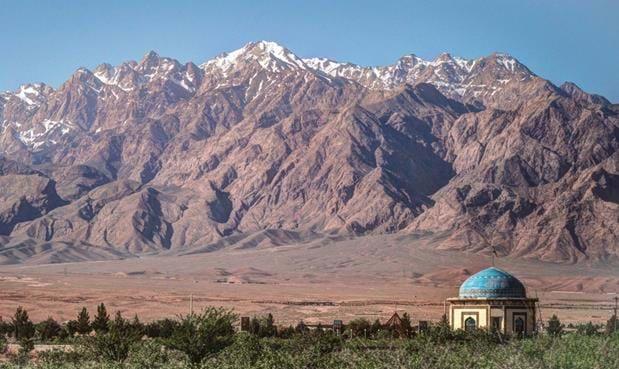
Why visit in April?
This is the period just after Nowruz, the Persian New Year, and is perfect in terms of weather, with warm, sunny days and cool nights the norm. Spring flowers and fruit trees are in full bloom, while the country’s public spaces have all had a deep clean over the spring holidays.
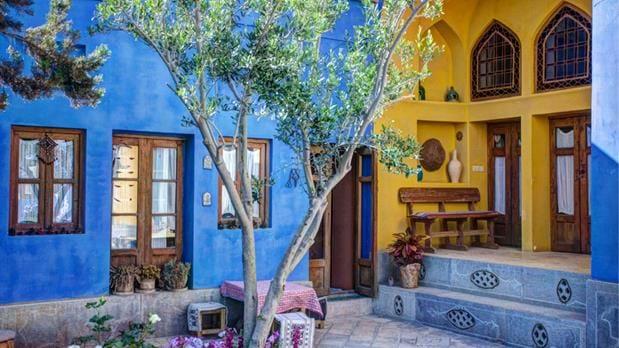
How about the accommodation?
On this tour, we stay in a mix of heritage boutique hotels, and Western-style three- and four-stars. We’ve road tested all the accommodation and are confident each place we’ve chosen offers great levels of comfort, service and value for money.
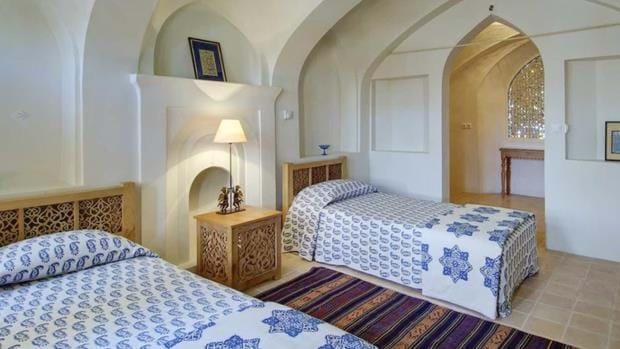
What is the food like?
Most restaurants serve a mix of succulent lamb and chicken kebabs, delicately spiced with cumin and saffron, and accompanied side dishes of vegetables and yoghurt or bean-based dips. Vegetarians are well catered for: the Iranians do wonderful things with aubergines! Freshly baked bread is also an important part of every meal. And the sweet treats, flavoured with honey, rose water and cardamom, are sublime!
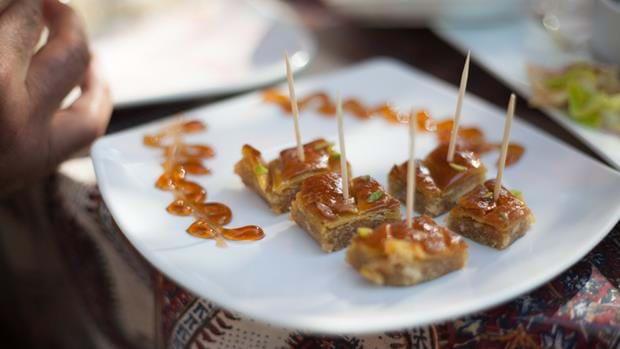
Will there be guides?
Yes. You will be accompanied throughout journey by an English-speaking guide on every TransIndus group tour
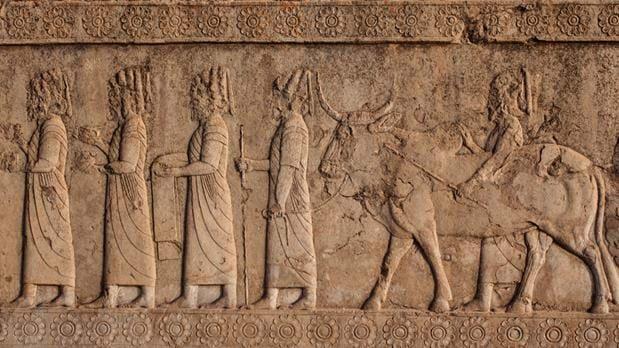
Remember, this trip can be personalised to suit your travel needs - we can tailor everything from hotel, travel type, duration and more.







